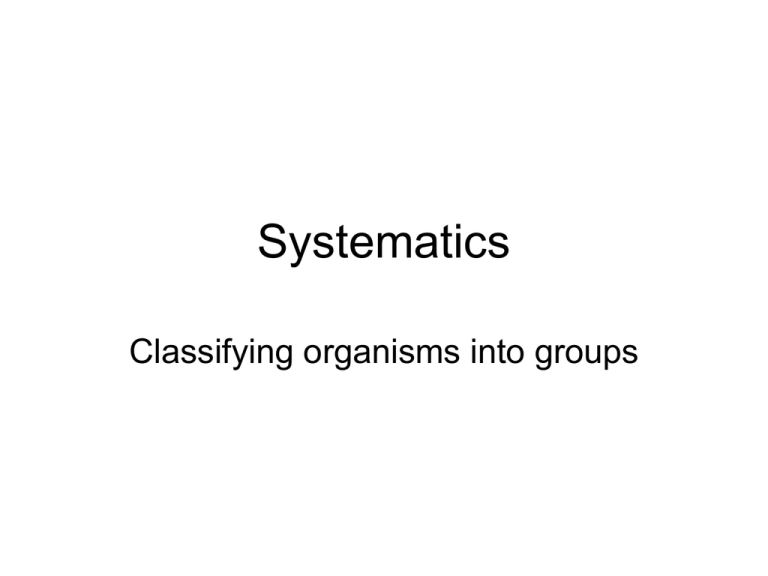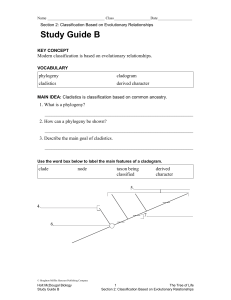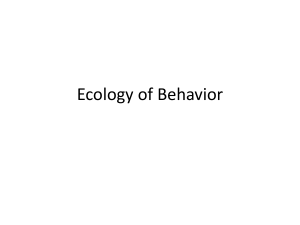Systematics Classifying organisms into groups
advertisement

Systematics Classifying organisms into groups Why classify? • To create the fundamental database of the science • Analogy - classification systems for rocks • Big difference – Rocks are on a continuum of composition – Organisms fall into discrete groups (species) – So geological classification tends to be graphical and biological is hierarchal http://www.newworldencyclopedia.org/entry /File:Hominoid_taxonomy_6.png http://www.geologycafe.com/images/igneous_rocks.jpg Goals of classification • Make morphologic groups – This is what Linneaus was trying to do in the 1700’s • Represent evolutionary relationships • These two goals are not always compatible Schools of classification • Traditional taxonomy • Phenetics • Cladistics Traditional • Original goal: produce morphologic groups • New goal: represent evolutionary relationships, produce “natural groups” • Find patterns of ancestry • Methodology: analyze “important” characters • Product: evolutionary trees • Requires expertise - only an expert recognizes the important characters • How is it objective? • How is it subjective? • Challenges: convergent evolution Cladistics • Goal: to construct and test evolutionary hypotheses • Find sister groups, not ancestry – Sister groups are evolutionary related, but it makes no statement about descent • Methodology: analyze derived characters – Characters that mark a change from the lineage that led to this organism • Product: cladogram Cladistics, cont. • Requires expertise to recognize derived characters • Challenge: blows up some recognized groups Evolutionary tree – what are the axes? http://darwiniana.org/famtree3b.gif Cladograms – what are the axes? Why aren’t they the same? https://www.sciencemag.org/content/340/6129/ 1233062/F1.large.jpg http://tolweb.org/tree/ToLimages/ cladogram_parallel_evo.250a.jpg




